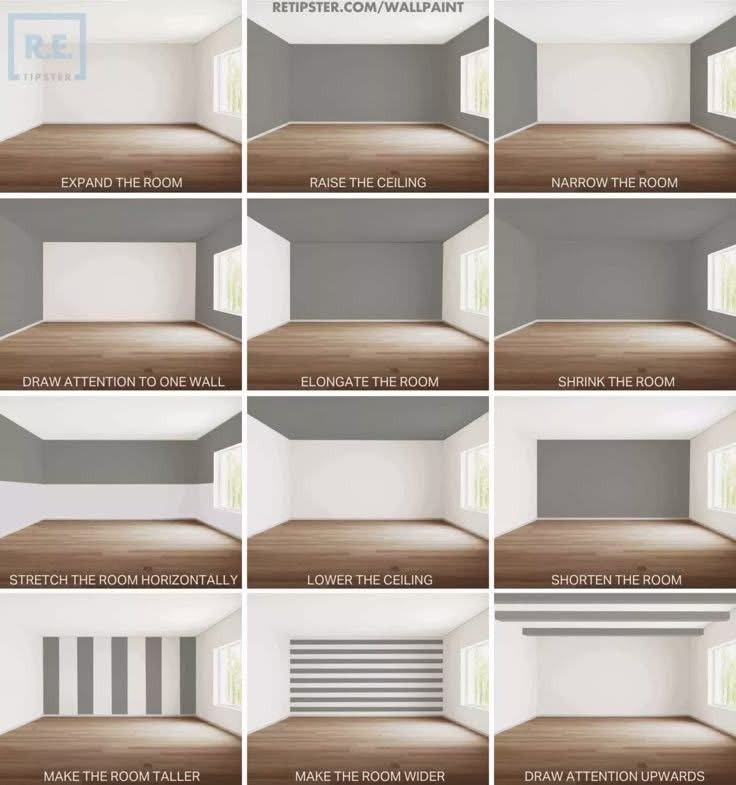The Power of Paint: How Color Can Transform a Room
When designing a space, many people focus on furniture, lighting, and décor—but one of the most powerful tools for shaping a room’s look and feel is color. The image above from RE Tipster demonstrates how different paint techniques can visually alter a room’s size, proportions, and atmosphere. Whether you're trying to make a small room feel bigger, create a cozy space, or highlight architectural features, strategic use of color can make all the difference.
Expanding or Shrinking a Room with Color
One of the most common challenges in home design is making a room feel more spacious. Lighter colors, like whites and soft neutrals, reflect light and give the illusion of openness, as seen in the "Expand the Room" example. Painting adjacent walls the same light shade can enhance this effect. On the other hand, darker tones absorb light and create a more intimate setting, which can make a large room feel cozier, as demonstrated in the "Shrink the Room" example.
Altering Ceiling Height
Ceiling height can dramatically impact how a room feels, and paint can manipulate this perception. If you want to make a ceiling feel higher, painting the walls a darker shade while keeping the ceiling white, as shown in the "Raise the Ceiling" image, can create a sense of verticality. Conversely, painting the ceiling a darker color, as in "Lower the Ceiling," makes the space feel more enclosed and intimate.
Changing Room Proportions
A room’s shape can be visually adjusted with color placement. In the "Elongate the Room" example, painting two opposite walls a darker shade makes the space feel longer. Similarly, painting only the farthest wall a dark color, as seen in "Shorten the Room," brings the wall forward, making the room feel cozier.
Using Stripes and Accents for Optical Effects
Patterns can also play a role in room perception. Vertical stripes, like those in "Make the Room Taller," draw the eye upward, making the ceiling appear higher. Horizontal stripes, as shown in "Make the Room Wider," create a broader feel. If you want to make a single wall stand out, using a bold accent color, as in "Draw Attention to One Wall," can create a focal point.
Emphasizing Architectural Features
Strategic paint placement can also enhance architectural elements. In "Draw Attention Upwards," painting ceiling beams or molding a darker color makes these features stand out, adding depth and character to the space.
Final Thoughts
Whether you're working with a small apartment or a large living area, understanding how color influences perception can help you create a space that feels just right. By playing with contrast, tones, and patterns, you can manipulate a room’s size, shape, and overall ambiance—no renovation required!
What’s your next painting project? Will you use color to open up a space, create coziness, or highlight architectural details?
